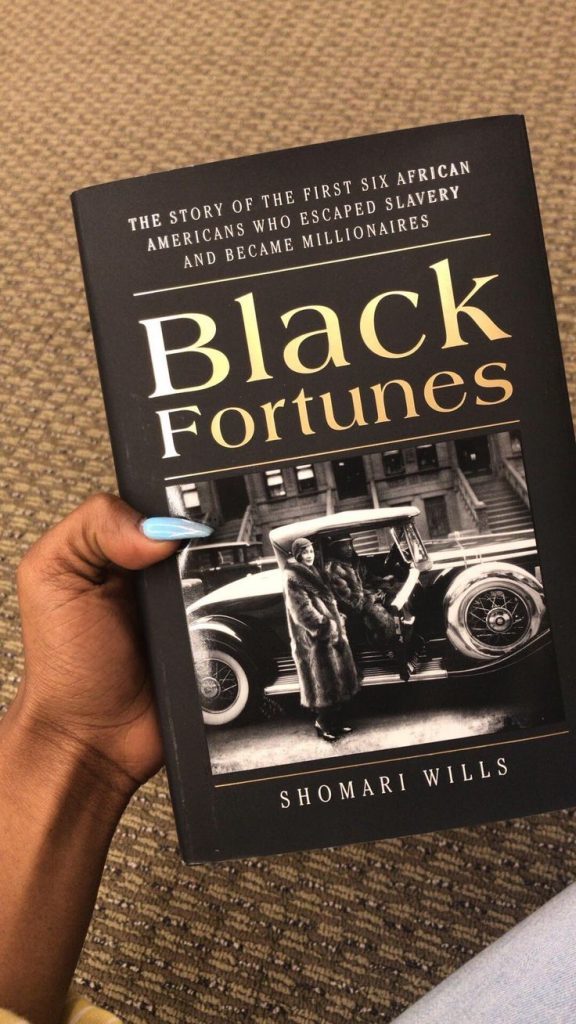“Black Fortunes” by Shomari Wills is a captivating book that tells the stories of the first black millionaires in America, who achieved remarkable success and impact in the face of tremendous adversity. In this review, I will share some of the lessons I learned from the book and how they can inspire and inform current and aspiring black entrepreneurs and professionals.
1. Resilience Overcomes Adversity:
The stories of successful black entrepreneurs in the book showcase their resilience in the face of significant adversity, including racial discrimination and economic challenges. For example, Mary Ellen Pleasant, who was born into slavery, escaped to the North and became a successful businesswoman and abolitionist in San Francisco, where she helped many slaves gain their freedom.
2. Entrepreneurship as Empowerment:
“Black Fortunes” emphasizes how entrepreneurship can be a powerful tool for empowerment, enabling individuals to create their own opportunities and break free from systemic barriers. For instance, O.W. Gurley, who founded the prosperous black town of Greenwood in Tulsa, Oklahoma, also known as “Black Wall Street”, provided jobs, housing, and education for thousands of black people who faced discrimination and violence in other parts of the country.
3. Historical Context Matters:
Understanding the historical context in which these entrepreneurs lived and worked is crucial for appreciating the significance of their achievements. It highlights the impact of historical events on economic opportunities for black Americans. For example, the book shows how the Civil War, Reconstruction, Jim Crow, the Great Migration, and the Harlem Renaissance shaped the lives and businesses of the first black millionaires.
4. Financial Literacy is Key:
The book underscores the importance of financial literacy. Successful entrepreneurs featured in the book often possessed a strong understanding of economic principles, investments, and financial management. For example, Jeremiah Hamilton, who became the first black Wall Street tycoon, was a savvy investor who amassed a fortune by speculating on stocks, bonds, real estate, and insurance.
5. Community Support and Networking:
Building strong networks and receiving support from the community played a pivotal role in the success of these entrepreneurs. Collaborative efforts and mutual support were essential in overcoming challenges. For example, Annie Turnbo Malone and Madam C.J. Walker, two of the first black female millionaires, who built their empires on hair care products, often hired, trained, and mentored other black women, creating a network of agents, distributors, and customers across the nation.
6. Diversification of Investments:
Successful individuals in the book often diversified their investments, showcasing the importance of spreading risk and exploring various avenues for financial growth. For example, Robert Reed Church, the first black millionaire in the South, invested in real estate, transportation, entertainment, banking, and politics, becoming one of the most influential and wealthy men in Memphis.
7. Leadership and Vision:
The featured entrepreneurs exhibited strong leadership qualities and a clear vision for their businesses. Their ability to lead, innovate, and adapt contributed to their long-term success. For example, John H. Johnson, who founded the media empire that included Ebony and Jet magazines, was a visionary leader who anticipated the needs and interests of the black market and created products and services that catered to them.
8. Education as a Catalyst:
Education is highlighted as a catalyst for success. Many of the entrepreneurs featured in the book leveraged their education to navigate complex business landscapes and make informed decisions. For example, Alonzo Herndon, who became the richest black man in Atlanta, started as a barber and used his education to learn about the insurance industry, eventually founding the Atlanta Life Insurance Company, one of the largest black-owned businesses in the country.
9. Social Impact Through Wealth:
The accumulation of wealth was not just about personal success but also about creating a positive social impact. The entrepreneurs contributed to their communities and challenged societal norms through their financial achievements. For example, Hannah Elias, who was one of the richest black women in New York, used her wealth to fund schools, hospitals, and charities for the black community, and also to fight for her rights in court against a white mob that tried to evict her from her home.
10. Legacy and Generational Wealth:
The book emphasizes the importance of creating a lasting legacy and generational wealth. Successful entrepreneurs often took steps to ensure that their wealth would benefit future generations, contributing to a broader economic upliftment. For example, Madam C.J. Walker, who was the first self-made female millionaire in America, left a substantial portion of her estate to various causes, including education, civil rights, and arts, and also established a foundation that continues to support black women and entrepreneurs today.
Personally, I found the book very inspiring and informative, as it showed me how the first black millionaires in America overcame incredible odds and created a lasting impact on society. I hope you enjoy reading it as much as I did.
BUY BOOK ON AMAZON
GET FREE AUDIOBOOK



“Black Fortunes” by Shomari Wills is truly an inspiring read that sheds light on the resilience and determination of the first black millionaires in America. Their stories of overcoming adversity and achieving success are both motivating and educational. This book is a must-read for anyone interested in the history of black entrepreneurship and the impact these individuals had on society. It’s a reminder that with perseverance, anything is possible. Have you considered how their experiences can influence modern-day entrepreneurs?